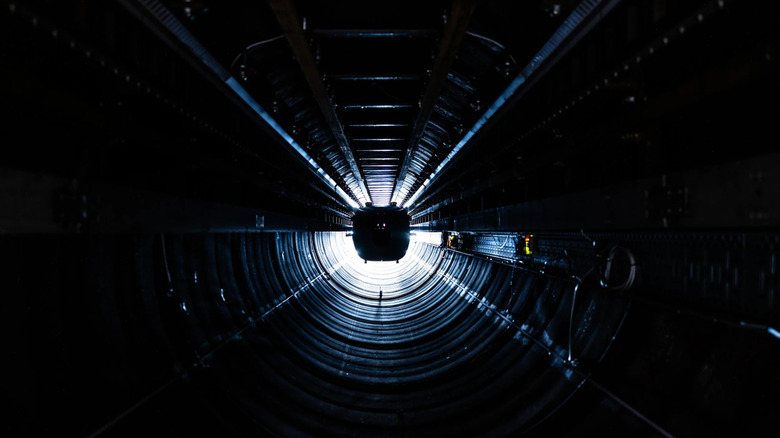This Train Just Set A Hyperloop Top Speed Record & May Be The Future Of Transportation
For those unfamiliar, a hyperloop is a currently experimental form of public transportation originally conceptualized by Elon Musk, in which a passenger capsule is sealed into a borderline vacuum-sealed tube track and propelled along at high speeds via magnetic propulsion. The lack of air resistance and the sheer railgun-esque force of the magnetic rails would, in theory, allow such a vehicle to shoot forward at incredible speeds, exponentially faster than any other ground-based public transport currently in use. Various tests and experiments for hyperloop systems are underway all around the world, especially in Europe and Asia, though unfortunately, less so in the United States.
Hyperloop systems are still deep in experimental phases, as they need to be both safe for public use and stable enough to perform complicated maneuvers like track-switching. However, new strides in the field are being made all the time. In fact, over at the European Hyperloop Center in the Netherlands, hyperloop development company Hardt recently set a new speed record for its prototype capsule on the test track. Hardt's hyperloop successfully propelled forward at 53 miles per hour while also performing a lane switch maneuver, a vital step in the development process.
The Hardt Hyperloop successfully reached 53 MPH
On September 10, Hardt Hyperloop was running tests on its current iteration of a Hyperloop capsule at the European Hyperloop Center test track, a 420-meter testing ground built specifically for simulating this kind of experimental travel. From the start of the test, the Hardt capsule swiftly accelerated at 0.3G, reaching speeds of 85 kilometers per hour, or 53 miles per hour, within the first 140 meters of the test track. After reaching this record-breaking speed, the capsule then successfully performed a 155-meter lane switch and came to a safe stop on the last 100 meters of the track.
The capsule was only built to travel at 80 kilometers per hour, so this is an expectation-defying performance in more ways than one. Following this impressive performance, Hardt Hyperloop managing director Roel van de Pas issued a press statement, saying, "This milestone proves the capability and growing maturity of our hyperloop traction technologies. Demonstrating lane-switching at these speeds – in this environment – is a major leap from theoretical designs to real-world systems, and a great accelerator for scalable hyperloop implementation worldwide."
With this successful test on the books, Hardt's next order of business is to set up a demo route for its system, roughly 3-5 kilometers in length. With any luck, it will be able to set up its first operational transport route afterwards, slated to measure 30-50 kilometers. Similar demo routes are planned in Italy, Germany, and elsewhere, though the planned hyperloop in California remains unfinished.
